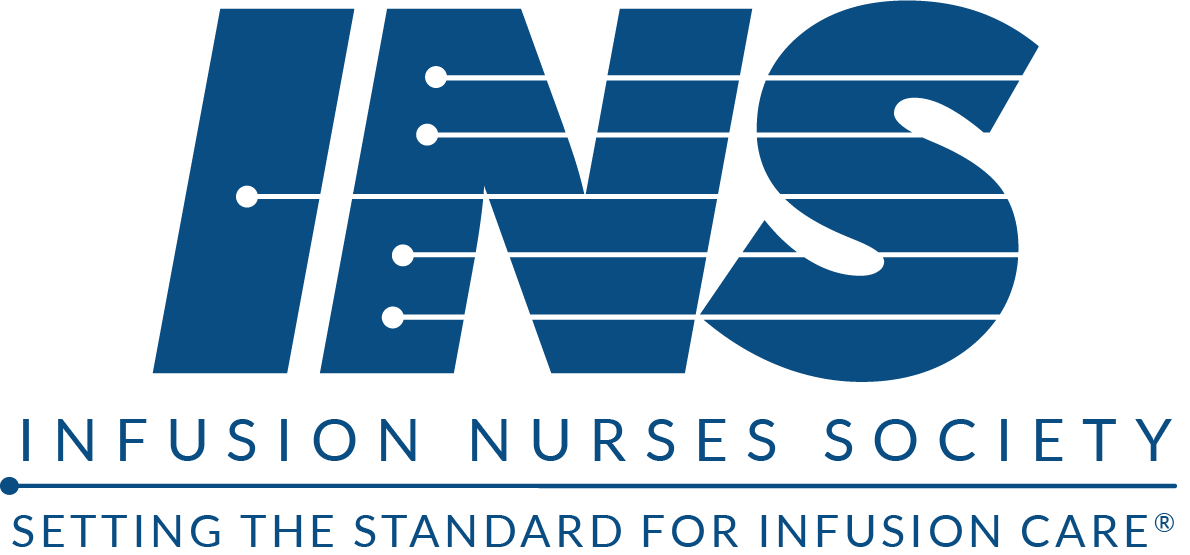BACKGROUND
As an author and speaker, I have always been interested in stress and its contributing factors. I’ve studied burnout, anxiety, fatigue, and the workforce to better understand the work done in health systems focused on enhancing engagement and minimizing the great migration from our profession. I have also developed strategies that I’ve shared with major health systems that focus on Retention before Recruitment, knowing that if the pieces are in place, recruitment will not be an issue. The common denominator in those cases reviewed is “Overwork.” I posit that if we can overcome the overwhelm from overwork, we can mend a broken system.
The nursing profession is inherently demanding, requiring a balance of physical stamina, emotional resilience, and cognitive clarity. The workload on nurses has intensified as health care systems face increased pressures from an aging population, chronic disease prevalence, and unexpected crises such as pandemics. It’s time to identify strategies to manage and overcome the overwhelming effects of overwork, with a focus on self-care, supportive work environments, and systemic change.
Understanding Nurse Burnout
We hear about it, and chances are that we have experienced it—but do we understand the phenomenon known as “Burnout?” Burnout is a state of emotional, physical, and mental exhaustion caused by prolonged and excessive stress. According to a study by Dall’Ora et al,1 burnout among nurses is associated with increased workload, insufficient staffing, and lack of organizational support.
Brady et al2 address the Maslach Burnout Inventory (MBI) and identify 3 key components of burnout: emotional exhaustion, depersonalization, and reduced personal accomplishment. Emotional exhaustion refers to feeling emotionally drained and depleted of emotional resources. Depersonalization involves a detached response to other people, including patients. Reduced personal accomplishment is the tendency to negatively evaluate oneself and feel inadequate in one’s professional role. One can only imagine how these feelings impact performance in the clinical setting. It’s no wonder that nurses are leaving the profession! Are we giving them a reason to stay, and are we conducting “stay” interviews to determine what makes nurses stay with an employer or organization?
The Impact of Overwork on Nurses
Overwork is a familiar challenge nurses face, driven by staffing shortages, increased patient acuity, and administrative burdens. The consequences of overwork are profound, affecting nurses’ physical health, mental well-being, and job satisfaction. Following are 6 key considerations and suggested solutions:
- Physical Health Consequences
Prolonged periods of overwork can lead to various physical health issues for nurses. Chronic fatigue, musculoskeletal disorders, compromised immune systems, and cardiovascular problems are prevalent among those who work long hours without adequate rest. Stimpfel et al3 found that nurses who worked shifts longer than 12 hours were more likely to experience burnout and job dissatisfaction.
Solution: Promote flexible staffing and work/life integration!
- Mental Health Impact
The mental health impact of overwork is equally concerning. Nurses frequently experience high levels of stress, anxiety, and depression due to the demands of their jobs. These challenges can lead to decreased job performance, increased absenteeism, and a higher turnover rate.
Solution: Ensure that staff feels seen, valued, and supported!
- Job Satisfaction and Retention
Overwork significantly affects job satisfaction and retention among nurses. High-stress levels and burnout contribute to job dissatisfaction, leading to increased turnover rates. This creates a vicious cycle, as high turnover exacerbates staffing shortages, further increasing the workload for the remaining staff. A study by Aiken et al4 demonstrated that hospitals with higher nurse-to-patient ratios had lower rates of burnout and higher job satisfaction among nurses. Retaining experienced nurses is crucial for maintaining quality patient care and reducing the strain on the health care system.
Solution: Promote professional development and certification; host “stay” interviews!
Table 1 offers a view of critical studies exploring the relationship between burnout and satisfaction.
Case Study 1: Job Demands and Functional Resources
Eriksson5 shared data collected yearly for 3 years in 2 small and 3 mid-sized Swedish hospitals in urban areas. Care units were selected to match across hospitals to the greatest extent possible. The goal was to investigate how job demands and resources interact to predict one’s intention to leave the workforce/workplace.
Case Study 2: Effect of Emotional Intelligence and Psychosocial Risks – Burnout Prediction
Soto-Rubin6 studied interventions to ensure nurses’ health and psychological well-being in the workplace, especially during a crisis.
Case Study 3: Critical Reasons Behind Hospital Nurses’ Turnover
Eriksson7 analyzed how critical factors at various levels in a health care system interact and impact nurses’ intention to leave and the decision to quit their jobs. They found that policies and decisions at the system levels must support nurses’ recovery, ability to work, and level of work/life balance if nurses are to be retained in intensive and emergency health care settings.
- Patient Care and Safety
The impact of overwork extends beyond the well-being of nurses to the quality of patient care and safety. Overworked nurses are more likely to make errors, which can compromise patient safety. Research by Banda et al8 found that increased nurse workloads were associated with higher rates of medication errors, patient falls, and infections. Ensuring nurses have manageable workloads is essential for safe and effective patient care.
Nurse fatigue is closely linked to patient safety, particularly in the high-stakes environment of infusion care. For example, fatigue can increase the likelihood of administering the wrong medication, incorrect dosages, or improper infusion rates, which can have dire consequences for patients. Additionally, fatigue can lead to lapses in following protocols, such as failing to double-check patient identifiers or neglecting to monitor patients for adverse reactions during infusions. These mistakes compromise patient safety and contribute to nurse distress, creating a burnout cycle and further fatigue.
Imes et al9-11 addressed research from the writing group of the Expert Panel on Global Health of the American Academy of Nursing, of which the author is a part, showing that fatigued nurses are more prone to errors. The risks are heightened in infusion care, where even minor mistakes can be life-threatening. Addressing nurse fatigue through proper staffing, adequate rest, and supportive work environments is essential to safeguarding patient safety and ensuring high-quality care in infusion therapy (Table 2).
Solution: Create a safe working environment!
- Organizational and Economic Implications
Overwork can have significant organizational and economic implications. High turnover rates and increased absenteeism lead to higher recruitment and training costs for health care organizations. Errors and compromised patient care can result in costly legal actions and damage the organization’s reputation. Investing in strategies to reduce nurse overwork and improve job satisfaction can ultimately lead to cost savings and enhanced organizational performance.
Solution: Encourage meaningful recognition and give nurses a reason to stay!
- Leveraging Technology to Enhance Efficiency
Technology has the potential to significantly reduce nurses’ workloads by streamlining administrative tasks, improving communication, and enhancing patient care delivery. However, integrating technology must be done thoughtfully to ensure it supports nurses rather than adds to their burden. Infusion nurses leverage technology in various ways to enhance efficiency and reduce overwhelm in their practice. One essential tool is electronic health records (EHRs), which streamline documentation and ensure quick access to patient information. This reduces the time spent on paperwork and minimizes the risk of errors, allowing nurses to focus more on patient care.
Smart infusion pumps are another critical technology. They offer precise medication delivery and reduce the need for constant manual monitoring. These devices often have safety features that alert nurses to potential issues, further reducing stress and preventing medication errors.
Mobile health apps and telemedicine platforms also enable nurses to monitor patients remotely, provide timely interventions, and manage workloads more effectively. These tools allow for better coordination among care teams and ensure that nurses can address patient needs promptly, even when working in different locations.
Automated scheduling systems also play a significant role, helping to optimize shifts and prevent burnout by ensuring fair and balanced workloads.
Solution: Integrate these technologies into daily routines.
Yes, the stakes are high, and overwork is the culprit. Addressing this issue requires a comprehensive approach that includes adequate staffing, supportive work environments, and strategies to promote nurse well-being. By recognizing and addressing the consequences of overwork, health care organizations can improve nurse retention, enhance patient safety, and create a more sustainable health care system.
Overwork in nursing affects individual nurses and has broader implications for patient care and health care systems. Research has shown that overworked nurses are more likely to experience physical health issues, such as musculoskeletal disorders, cardiovascular problems, and mental health issues, including anxiety, depression, and burnout, according to Aiken et al.4
Patient outcomes are directly impacted by nurse workload. According to Cho et al,12 higher nurse-to-patient ratios are linked to increased patient mortality, infection rates, and poorer patient care. Overworked nurses are more prone to errors, which can compromise patient safety.
CONCLUSION
Identifying the signs of overwhelm is essential for maintaining nurses’ well-being and preventing burnout. By recognizing the physical, emotional, behavioral, and cognitive symptoms of overwhelm, nurses and health care organizations can implement targeted interventions to support nurse well-being. Early identification and intervention are crucial for ensuring that nurses can continue providing high-quality care while maintaining their health and job satisfaction.
Melnyk et al13,14 focus on implementing evidence-based practice (EBP) protocols to streamline nursing tasks and reduce variability in care delivery. EBP integrates clinical expertise, patient preferences, and the best available evidence, leading to more efficient and effective care processes.
The Role of Self-Care in Preventing Burnout
Self-care is not selfish! Nurses must maintain their well-being and provide high-quality care. The American Nurses Association’s (ANA’s) Code of Ethics15 emphasizes the nurse’s duty to self and others, highlighting the importance of self-care.
Overcoming the overwhelm from overwork requires a multifaceted approach that includes individual self-care, supportive work environments, continuing education, and systemic advocacy. By adopting these strategies, nurses can enhance their well-being, improve patient care, and create a more sustainable and rewarding profession. This requires a concerted effort from health care organizations, policymakers, and society. By prioritizing nurse well-being and implementing evidence-based strategies, we can ensure that nurses are empowered to provide the highest quality of care while maintaining their health and well-being.
Overcoming the overwhelm of overwork within the infusion specialty practice is critical for maintaining high standards of practice as set by the Infusion Nurses Society (INS). The INS Infusion Therapy Standards of Practice (Standards)16 emphasize evidence-based practice, patient safety, and professional accountability, which can be compromised when nurses are overwhelmed by excessive workloads.
The first step in overcoming this overwhelm is prioritizing workload management through evidence-based staffing models. Research consistently shows that adequate nurse-to-patient ratios are directly linked to improved patient outcomes and reduced burnout among nurses. By aligning staffing levels with the complexity and acuity of infusion therapy, health care organizations can ensure that nurses can deliver care that meets INS standards without compromising their well-being.
Another critical approach is fostering a supportive work environment that encourages collaboration and communication. Evidence suggests that when nurses have access to a strong support network, including peer mentorship and leadership that values their input, they are better able to cope with the demands of their role. This is particularly important in infusion therapy, where adherence to INS Standards16 requires meticulous attention to detail and ongoing professional development. A supportive environment alleviates stress and promotes continuous learning and adherence to best practices.
Lastly, leveraging technology can significantly reduce the burden of overwork. Smart infusion devices, electronic health records (EHRs), and clinical decision support systems can streamline workflows and reduce the likelihood of errors, allowing nurses to focus on patient care rather than administrative tasks. By integrating these technologies into practice, nurses can maintain high standards of care while mitigating the risk of burnout. Nurses can overcome challenges through evidence-based staffing, supportive work environments, and technology and continue providing safe, effective, high-quality infusion therapy.
REFERENCES
- Dall’Ora C, Ball J, Reinius M, Griffiths P. Burnout in nursing: a theoretical review. Hum Resour Health. 2020;18(1):41. Published 2020 Jun 5. doi:10.1186/s12960-020-00469-9 (1), 41. https://doi.org/10.1186/s12960-020-00469-9
- Brady KJS, Ni P, Sheldrick RC, et al. Describing the emotional exhaustion, depersonalization, and low personal accomplishment symptoms associated with Maslach Burnout Inventory subscale scores in US physicians: an item response theory analysis. J Patient Rep Outcomes. 2020;4(1):42. Published 2020 Jun 1. doi:10.1186/s41687-020-00204-x
- Stimpfel AW, Sloane DM, Aiken LH. The longer the shifts for hospital nurses, the higher the levels of burnout and patient dissatisfaction. Health Aff (Millwood). 2012;31(11):2501-2509. doi:10.1377/hlthaff.2011.1377
- Aiken LH, Clarke SP, Sloane DM, Sochalski J, Silber JH. Hospital nurse staffing and patient mortality, nurse burnout, and job dissatisfaction. JAMA. 2002;288(16):1987-1993. doi:10.1001/jama.288.16.1987
- Eriksson A, Jutengren G, Dellve L. Job demands and functional resources moderating assistant and registered nurses’ intention to leave. Nurs Open. 2021;8:870-881. doi:10.1002/nop2.694
- Soto-Rubio A, Giménez-Espert MdC, Prado-Gascó V. Effect of emotional intelligence and psychosocial risks on burnout, job satisfaction, and nurses’ health during the COVID-19 pandemic. Int J Environ Res Public Health. 2020;17(21):7998. doi:10.3390/ijerph17217998.
- Eriksson A, Vulkan P, Dellve L. A case study of critical reasons behind hospital nurse turnover due to challenges across system levels. J Multidiscip Health. 2022;15:1213-1224. doi:10.2147/JMDH.S363390.
- Banda Z, Simbota M, Mula C. Nurses’ perceptions on the effects of high nursing workload on patient care in an intensive care unit of a referral hospital in Malawi: a qualitative study. BMC Nurs. 2022;21(1):136. doi:10.1186/s12912-022-00918-x
- Imes CC, Tucker SJ, Trinkoff AM, Weinstein SM, Dunbar-Jacob J. Policy on night shift nurses’ adverse health outcomes and organizational costs: an AAN consensus paper. Nurs Adm Q. 2024;47(4). doi:10.1097/NAQ.0000000000000595.
- Imes CC, Tucker SJ, Trinkoff AM, et al. Wake-up call: night shifts adversely affect nurse health and retention, patient and public safety, and costs. Nurs Adm Q. 2023;47(4):E38-E53. doi:10.1097/NAQ.0000000000000595
- Trinkoff AM, Baldwin CM, Chasens ER, et al. Fatigue subgroup of the Health Behavior Expert Panel, American Academy of Nursing. Nurses are more exhausted than ever: what should we do about it? Am J Nurs.2021; 121(12):18-28. doi:10.1097/01.NAJ.0000802688.16426.8d.
- Cho E, Chin DL, Kim S, Hong O. The relationships of nurse staffing level and work environment with patient adverse events. J Nurs Scholarsh. 2016;48(1):74-82. doi:10.1111/jnu.12183
- Melnyk BM, Fineout-Overholt E, Gallagher-Ford L, Kaplan L. The state of evidence-based practice in US nurses: critical implications for nurse leaders and educators. J Nurs Adm. 2012;42(9):410-417. doi:10.1097/NNA.0b013e3182664e0a
- Melnyk BM, Amaya M. Wellness cultures to improve population health and well-being in institutions of higher learning and academic medical centers, The Ohio State Solution. In Weinstein SM, Readinger D (eds), Healing Healthcare: Evidence-Based Strategies to Mend Our Broken System. Amplify Publishing Group; 2024:65-70.
- American Nurses Association. Code of ethics for nurses. American Nurses Publishing; 2015.
- Nickel B, Gorski L, Kleidon T, et al. Infusion therapy standards of practice, 9th ed. J Infus Nurs. 2024;47(Suppl 1):S1-S285. doi:10.1097/NAN.0000000000000532







